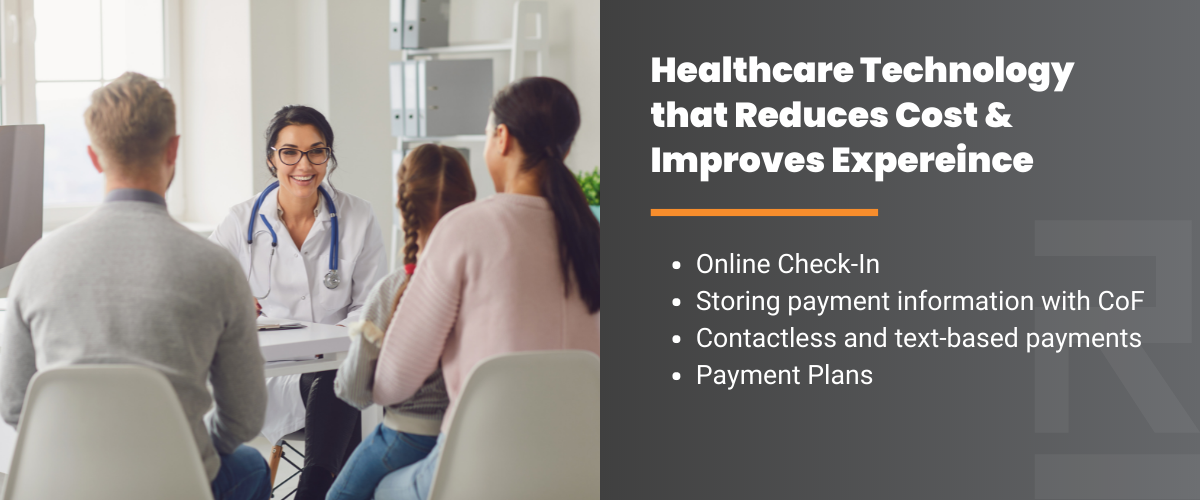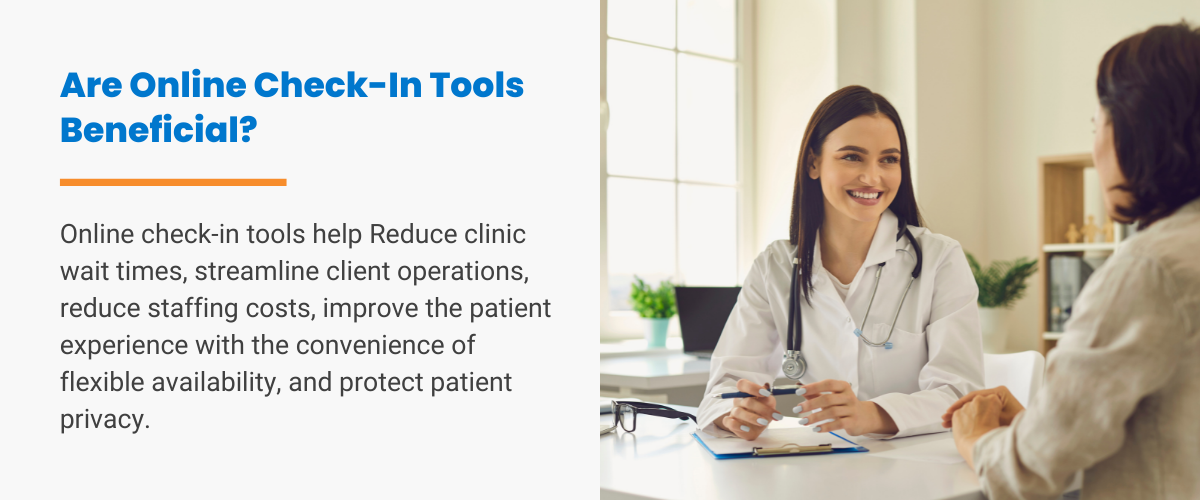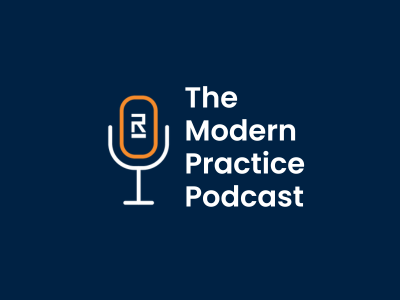Prior to the mid-2010s, travelers and city dwellers who didn’t want to walk or take public transportation had one choice: Wait for a taxi. Today, millions of people all over the world open a smartphone app that instantly connects them to someone in a personal vehicle willing to take them where they want to go, in what is now an $85 billion rideshare industry.
The same trends are happening in almost every consumer space. Innovative companies are finding ways to streamline everything from getting a haircut and having groceries delivered to watching television shows and movies on demand. As consumers become more comfortable with technology, they expect the same seamless, convenient experience everywhere, including from their healthcare partners.

Enhancing Patient Experience with Healthcare Technology
The primary driver behind everything healthcare partners do is patient experience. Unfortunately, the industry often lags behind others in terms of technology adoption and innovation. And today’s healthcare practices face pressure to reduce costs while also improving care quality and overall experience.
Fortunately, there are health tech solutions that allow practices of all sizes to improve operational efficiency and increase collections. Rather than coming at the expense of patient experience, these technologies give patients more control and lead to higher levels of satisfaction. In an NRC Healthcare Consumer Trends report, 80% of patients said they would consider switching providers for “convenience factors” alone. To thrive in today’s competitive environment, providers and clinics need technology in healthcare that increases patient satisfaction.
Storing Payment Information
When you shop with an e-retailer or sign up for a streaming service or subscription, the company takes your payment information online. Millions of online services also now offer the option to store your payment information, so you can pay for future purchases with just a few clicks. You can skip the hassle of entering all your payment information and simply charge a card on file.
Healthcare partner payments should be no different. Many patients visit the same clinic multiple times. Offering to store financial data securely with a Card on File (CoF) eliminates the hassle of entering it again every time that person comes in for care.
Online Check-In
Those old enough to remember a time before the internet probably remembers airline travel as a potentially arduous endeavor. Travelers would reserve a ticket in advance through a travel agent or go to the airport to buy a ticket. A desk agent would check for available flights, book your seat, and take payment at the desk.
Then the internet allowed travelers to look at flights, book the one that worked best, pay online, and get a digital boarding pass. Further innovations made it possible to check yourself in on a smartphone or kiosk, check your bags, and scan your ticket from your mobile device. Today, millions of people get on flights after little or no interaction with airline employees. Airlines benefit through reduced staffing needs and costs and travelers enjoy convenience.
Modern healthcare practices can similarly move from printed registration forms that patients fill out by hand in the waiting room to digital registration forms. A practice can send patients materials in advance of their appointment. Once filled out, that information instantly transfers into your practice management system.
Online check-in tools can:
- Reduce clinic wait times
- Improve the patient experience by allowing them to complete paperwork when it’s most convenient
- Streamline clinic operations and reduce staffing costs
- Protect patient privacy by avoiding discussion of personal information in a crowded waiting room

Contactless and Text-Based Payments
More than 80% of Americans used one or more forms of digital payment in 2021, according to a survey of digital consumer payment trends by McKinsey & Company. These payments are ubiquitous in consumer industries and most consumers say they prefer to use a digital form of payment over cash or checks.
The trend toward digital payments goes beyond just paying online with a credit card. The use of contactless payments using mobile payment apps grew by an astounding 29% in 2020, and continues to increase year-over-year. Digital wallets including Apple Pay, Google Pay, and Samsung Pay are a convenient way to store digital payment information and instantly complete transactions.
Healthcare partners know that collecting payment at the time of service is the best way to optimize revenue. Sending invoices after the patient leaves costs more, and it’s harder to collect the full balance in a timely manner. The longer it takes to collect on those outstanding balances, the less likely you will capture the full amount.
Offering contactless payment and other options for point-of-care payments increases revenue collection and reduces administrative costs associated with trying to collect payments later.
When patients do have a balance, the vast majority prefer to pay online. Offering online bill payment and other convenient options like Text-to-Pay is convenient and simple.
Payment Plans
Another trend in the McKinsey digital payments consumer survey was consumer affinity for “buy now, pay later” (BNPL) options. Millions of retailers offer the option to pay larger balances over time. Online payment systems divide the full balance into several equal amounts and debit the consumer’s card or bank account at regular intervals until the balance is paid.
These options can be particularly helpful for patients with large out-of-pocket healthcare balances to pay. A study from Crowe Horwath found that payment rates go down as total outstanding balances go up. Medical providers collect only:
- 25.5% of balances between $1,451 and $5,000
- 10.2% of balances between $5,001 and $7,500
- 4.1% of balances between $7,501 and $10,000
- 0.9% of balances over $10,000
Patients today are also responsible for covering more out-of-pocket costs, which means they are likely to have higher outstanding balances even after insurance pays. In the U.S.:
- 31% of people with medical insurance have a high deductible health plan (HDHP), with average deductibles of $2,303 for single coverage and $4,552 for family coverage
- 9.6% don’t have medical insurance (31 million people)
- 50% of adults have private dental coverage, but most of these plans require cost sharing or cover only a small portion of procedures beyond preventive care
- More than 75 million U.S. adults have no dental insurance, and even those with insurance report that their coverage isn’t enough to maintain oral health
Offering convenient payment plans is a way to allow patients to break up payments over time without adding interest and other fees, while patient financing helps practices to provide more care by offering third-party funding options. Healthcare partners collect more revenue, and patients don’t have the added stress of worrying they won’t be able to pay when a bill comes.
Improve Revenue and Increase Patient Satisfaction with Help from Rectangle Health
Rectangle Health is a leader in providing digital payment options and other tools that every modern healthcare partner needs. For nearly 30 years we have offered innovative solutions to streamline payment services in a wide variety of healthcare industries.
Rectangle Health’s industry-leading Practice Management Bridge® platform reduces friction and creates a seamless payment experience with any existing practice management system. Additionally, our latest functionality, patient finance options, is Rectangle Health’s answer to patient financing and healthcare’s answer to BNPL arrangements. Contact us today to learn more about all the available solutions to meet the ever-evolving needs of your patients.
References
- Statista. (2022, April 20). Ridesharing services in the U.S.- statistics & facts. Retrieved June 6, 2022 from https://www.statista.com/topics/4610/ridesharing-services-in-the-us/#dossierContents__outerWrapper.
- Insider Intelligence. (2021, July 6). US Bank Survey: Consumers want digitized healthcare payments. Retrieved June 6, 2022 from https://www.insiderintelligence.com/content/us-bank-survey-consumers-want-digitized-healthcare-payments.
- McKinsey & Company. (2021, October 26). New trends in US consumer digital payments. Retrieved June 6, 2022 from https://www.mckinsey.com/industries/financial-services/our-insights/banking-matters/new-trends-in-us-consumer-digital-payments.
- Insider Intelligence. (2021, March 30). US payment users will surpass 100 million this year. Retrieved June 6, 2022 from https://www.insiderintelligence.com/content/us-payment-users-will-surpass-100-million-this-year.
- Revenue Cycle Intelligence. (2017, March 30). Patient Collection Rates Drop as Out-of-Pocket Costs Go Up. Retrieved June 6, 2022 from https://revcycleintelligence.com/news/patient-collection-rates-drop-as-out-of-pocket-costs-go-up.
- Kaiser Family Foundation. (2020, October 8). 2020 Employer Health Benefits Survey. Retrieved June 6, 2022 from https://www.kff.org/report-section/ehbs-2020-section-8-high-deductible-health-plans-with-savings-option/.
- CDC. (2019, May). Regional Variation in Private Dental Coverage and Care Among Dentate Adults Aged 18–64 in the United States, 2014–2017. Retrieved June 6, 2022 from https://www.cdc.gov/nchs/products/databriefs/db336.htm.
- American Hospital Association. (2021, November 17). CDC reports on uninsured in first six months of 2021. Retrieved June 6, 2022 from https://www.aha.org/news/headline/2021-11-17-cdc-reports-uninsured-first-six-months-2021.
- Society of Human Resource Management (SHRM). (2020, October 13). Average Worker Paid $5,588 Out of Pocket for Family Health Coverage This Year. Retrieved June 6, 2022 from https://www.shrm.org/resourcesandtools/hr-topics/benefits/pages/average-worker-paid-more-out-of-pocket-for-family-health-coverage.aspx.
- CareQuest. A Snapshot of the 76.5 Million Americans Without Dental Insurance. Retrieved June 6, 2022 from https://www.carequest.org/resource-library/snapshot-765-million-americans-without-dental-insurance.
- NRC Health. (2018, December). 2019 Healthcare Consumer Trends Report. Retrieved June 6, 2022 from https://nrchealth.com/wp-content/uploads/2018/12/2019-Healthcare-Consumer-Trends-Report.pdf
- US. Bank. (2021, June 10). U.S. Bank Survey: COVID-19 Accelerated Virtual Care, Healthcare Payments Digitization. Retrieved June 6, 2022 from https://ir.usbank.com/news-releases/news-release-details/us-bank-survey-covid-19-accelerated-virtual-care-healthcare.



